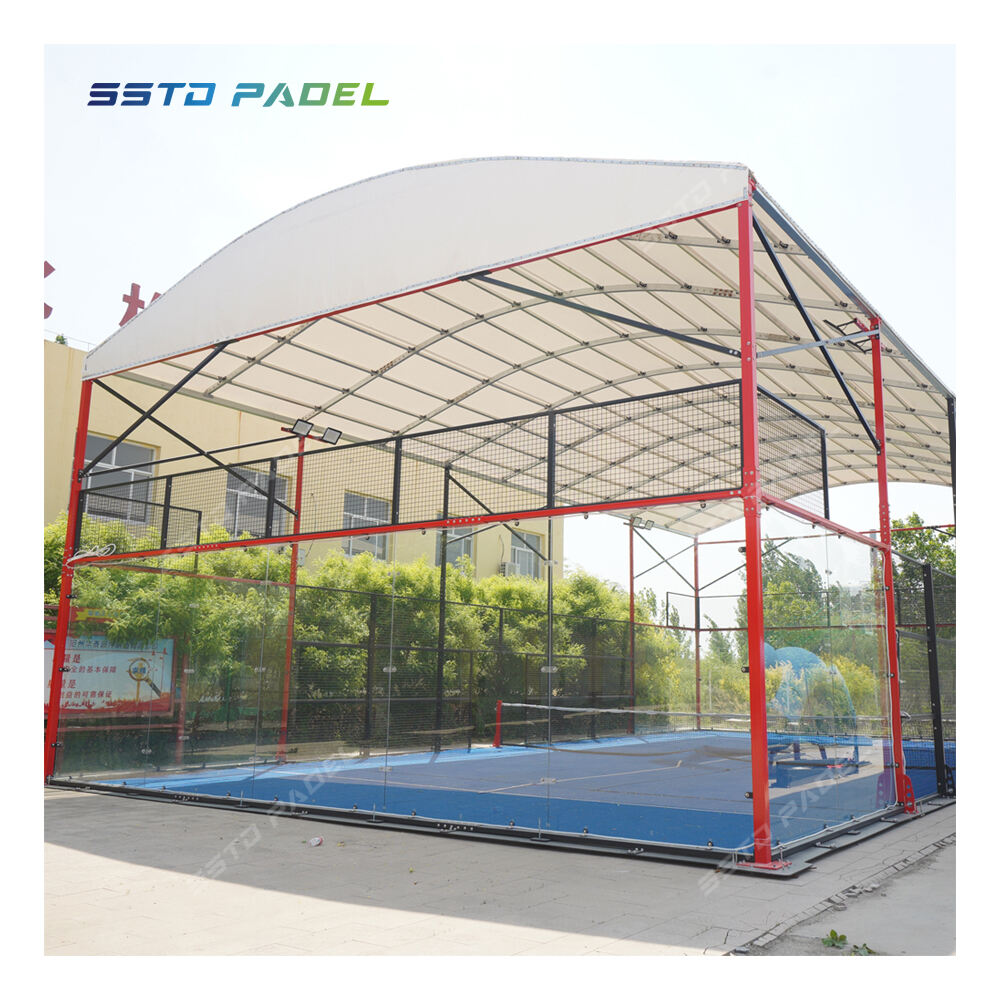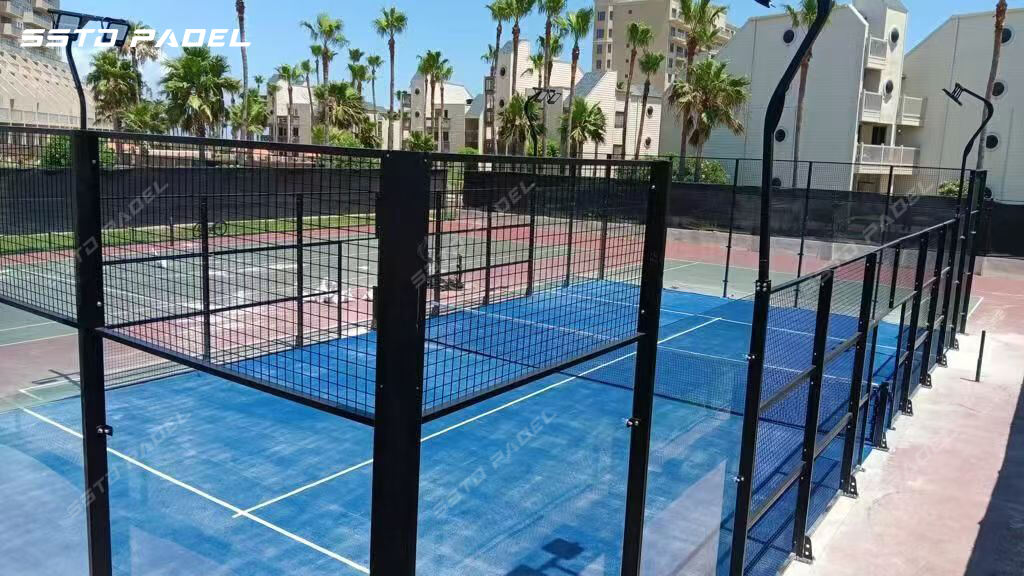Padel courts have become increasingly popular worldwide, with players and facility owners recognizing the importance of proper court infrastructure. One of the most critical aspects of padel court design is the roofing system, which protects players from weather elements while maintaining optimal playing conditions. A well-designed padel court roof ensures year-round playability, enhances player comfort, and extends the lifespan of court surfaces and equipment.

Modern padel facilities require roofing solutions that balance functionality, durability, and aesthetic appeal. The choice of roofing material and design directly impacts player experience, maintenance costs, and facility profitability. Understanding the various roofing options available helps facility owners make informed decisions that benefit both their business and their customers.
Weather protection remains the primary function of any padel court roofing system. Rain, snow, and excessive sunlight can significantly impact playing conditions and court maintenance requirements. Professional-grade roofing solutions address these challenges while providing adequate ventilation and lighting considerations essential for competitive play.
Essential Features of Professional Padel Court Roofing
Structural Integrity and Load Bearing Capacity
Professional padel court roofing systems must withstand various environmental stresses including wind loads, snow accumulation, and thermal expansion. The structural framework typically consists of galvanized steel or aluminum components engineered to meet local building codes and safety standards. These materials offer excellent corrosion resistance and longevity, crucial factors for outdoor installations exposed to diverse weather conditions.
The load-bearing capacity of padel court roof systems must account for both static and dynamic loads. Static loads include the weight of roofing materials, lighting fixtures, and accumulated precipitation. Dynamic loads encompass wind forces and seismic considerations depending on geographical location. Proper engineering ensures structural safety while minimizing material costs and construction complexity.
Foundation anchoring systems play a crucial role in overall structural performance. Deep-set concrete footings and mechanical anchoring systems distribute loads effectively while preventing uplift forces during severe weather events. Professional installation teams ensure proper alignment and levelness, critical factors for long-term structural integrity and court playability.
Material Selection and Durability Considerations
Roofing material selection significantly impacts both initial investment and long-term operational costs. Polycarbonate panels offer excellent light transmission while providing UV protection and impact resistance. These lightweight panels reduce structural load requirements while maintaining optical clarity that enhances the playing environment. Multi-wall polycarbonate construction provides superior insulation properties compared to single-layer alternatives.
Metal roofing systems, particularly those utilizing standing seam designs, provide exceptional weather protection and longevity. Aluminum and steel panels with specialized coatings resist corrosion and maintain appearance over extended periods. These systems accommodate thermal expansion effectively while providing excellent drainage characteristics essential for preventing water accumulation and ice formation.
Membrane roofing systems offer flexibility and cost-effectiveness for certain applications. Modern synthetic membranes provide excellent waterproofing while accommodating structural movement. These systems require proper substrate preparation and professional installation to achieve optimal performance and warranty compliance.
Ventilation and Climate Control Systems
Natural Ventilation Strategies
Effective ventilation prevents moisture accumulation and maintains comfortable playing conditions throughout various seasons. Natural ventilation systems utilize strategic openings and airflow patterns to promote air circulation without compromising weather protection. Ridge vents, soffit openings, and sidewall ventilation panels work together to create consistent air movement that prevents condensation and reduces humidity levels.
Passive ventilation systems require careful design consideration to balance airflow with weather protection. Opening sizes and placement must prevent rain infiltration while promoting adequate air exchange rates. Professional designers utilize computational fluid dynamics modeling to optimize ventilation patterns and ensure consistent air quality throughout the court enclosure.
Wind direction and local climate patterns influence ventilation system design. Prevailing wind patterns help determine optimal opening placement and sizing to maximize natural airflow benefits. Seasonal variations in temperature and humidity require ventilation systems that adapt to changing environmental conditions while maintaining consistent performance.
Mechanical Ventilation Integration
Mechanical ventilation systems provide precise climate control for facilities requiring consistent environmental conditions. Exhaust fans, air circulation systems, and humidity control equipment work together to maintain optimal playing conditions regardless of external weather patterns. These systems prove particularly valuable in regions with extreme climate variations or high humidity levels.
Smart control systems monitor environmental conditions and adjust mechanical ventilation accordingly. Temperature sensors, humidity monitors, and air quality meters provide real-time feedback that enables automated system adjustments. This technology minimizes energy consumption while maintaining ideal playing conditions and extending equipment lifespan.
Integration with heating and cooling systems creates comprehensive climate control solutions for year-round facility operation. Heat recovery ventilation systems capture thermal energy from exhaust air to preheat incoming fresh air, improving energy efficiency and reducing operational costs. These systems prove especially beneficial in facilities operating during cold weather periods.
Lighting Integration and Design Considerations
LED Lighting Systems and Placement
Modern padel court lighting systems utilize LED technology to provide uniform illumination while minimizing energy consumption and maintenance requirements. Proper light placement prevents shadows and glare that could affect player performance and safety. Professional lighting design considers court dimensions, ceiling height, and roofing structure to optimize light distribution patterns.
Light fixture mounting systems must integrate seamlessly with roofing structures while providing secure attachment points that withstand environmental stresses. Adjustable mounting systems allow for precise aiming and future maintenance access. Waterproof electrical connections and surge protection systems ensure reliable operation in all weather conditions.
Color temperature and light output specifications directly impact player comfort and performance. Professional-grade LED systems provide consistent color rendering and eliminate flicker that could affect ball tracking and player reaction times. Dimming capabilities allow facility operators to adjust lighting levels for different activities and energy conservation during off-peak hours.
Natural Light Optimization
Translucent roofing materials allow natural light penetration while providing weather protection and UV filtration. Optimal natural light levels reduce artificial lighting requirements during daytime hours, resulting in significant energy savings and improved playing environment. Polycarbonate and specialized glass panels offer various light transmission levels to match specific facility requirements.
Glare control systems prevent excessive brightness that could impair player vision and comfort. Specialized coatings and panel designs diffuse direct sunlight while maintaining adequate illumination levels. Strategic placement of opaque and translucent panels creates balanced lighting conditions throughout the court area.
Seasonal sun angle variations require roofing designs that accommodate changing natural light conditions. Adjustable shading systems and variable transmission panels help maintain consistent lighting conditions year-round. These systems enhance player comfort while reducing energy consumption and operational costs.
Installation and Maintenance Requirements
Professional Installation Standards
Professional installation ensures proper roof system performance and longevity while maintaining warranty coverage. Certified installers possess specialized knowledge of padel court requirements and local building codes. Proper installation techniques prevent common issues such as leaks, structural failures, and premature wear that could compromise facility operation.
Site preparation requirements include foundation work, utility routing, and structural assessments to ensure compatibility with existing facilities. Professional contractors coordinate with local authorities to obtain necessary permits and ensure compliance with zoning regulations. Proper project planning minimizes installation time and reduces disruption to facility operations.
Quality control procedures during installation verify proper assembly techniques and material specifications. Documentation of installation processes provides valuable reference information for future maintenance and warranty claims. Professional installers provide comprehensive system testing to ensure all components function correctly before facility handover.
Preventive Maintenance Programs
Regular maintenance programs extend roof system lifespan and prevent costly repairs or replacements. Inspection schedules identify potential issues before they develop into major problems affecting facility operations. Professional maintenance teams possess specialized knowledge and equipment necessary for safe and effective roof system servicing.
Cleaning procedures remove debris, algae, and other contaminants that could compromise roof performance or appearance. Specialized cleaning solutions and techniques preserve material integrity while restoring optimal function. Regular cleaning also prevents drain blockages that could lead to water damage or structural issues.
Component replacement schedules ensure continued system performance and safety. Gaskets, fasteners, and other wear items require periodic replacement to maintain weatherproof integrity. Professional maintenance teams maintain inventory of common replacement parts to minimize downtime during routine service procedures.
FAQ
What factors should be considered when selecting a padel court roofing system
Key factors include local climate conditions, budget constraints, facility usage patterns, and aesthetic preferences. Structural requirements, building codes, and long-term maintenance costs also influence the selection process. Professional consultation helps evaluate these factors and recommend optimal solutions for specific applications.
How long do typical padel court roofing systems last
Well-maintained roofing systems typically last 15-25 years depending on material quality, environmental conditions, and maintenance practices. Premium materials and professional installation can extend service life significantly. Regular maintenance and prompt repair of minor issues prevent premature system replacement.
Can padel court roofing systems be retrofitted to existing courts
Most roofing systems can be retrofitted to existing courts with proper structural assessment and modification. Foundation requirements, clearance considerations, and utility integration may require significant planning and construction work. Professional evaluation determines feasibility and provides accurate cost estimates for retrofit projects.
What are the energy efficiency benefits of modern padel court roofing
Modern roofing systems incorporate insulation, natural lighting, and efficient artificial lighting to reduce energy consumption. Smart control systems optimize climate control and lighting based on usage patterns and environmental conditions. These features significantly reduce operational costs while improving player comfort and environmental sustainability.

